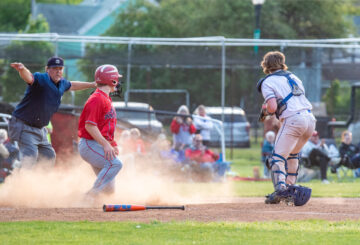“And that very night, as we lay packed tight in our robes beneath the snow,
And the dogs were fed, and the stars o’erhead were dancing heel and toe,”
From: “The Cremation of Sam McGee” by Robert Service
By Oak Duke,
Hard to believe that sled dog mushers and those other hardy souls in the dead of winter in the Northern latitudes could survive just fine by wrapping themselves in a Buffalo robe and sleep under a bank of snow through the very long nights, as the poet Robert Service immortalized in his ode to life under the Aurora borealis.
For that matter, it’s difficult to imagine living in an igloo, an icehouse.
Grousing and grumbling about cold temperatures in wintertime has become as ubiquitous as the whine of the neighbor’s snow-blower after a two-inch dusting of snow.
Maybe complaining about the cold helps us get through the winter.

Wildlife has evolved many unique and successful ways to deal with wintertime.
For instance my honeybees use the honey that they have manufactured throughout the spring, summer, and fall as heating fuel.
Surprisingly, no matter how cold the temperatures fall to outside the honeybee hive, their queen is toasty warm inside at the center of the hive, basking in a sauna of around 90 degrees F. throughout the winter months. That is, as long as her workers surround her in a cluster.
Researchers have taken thermal readings of honeybee hives and corroborated the fact that the bees keep the queen warm by ingesting their honey, and in a way shivering en masse.
The shivering of thousands of worker bees creates the necessary warmth, and the bees know how to position themselves just right in their cluster to allow moisture, which is the dread byproduct of the heat produced by the process of condensation.
Honeybees sustain quite well through the coldest winters, unless they are damp, sometimes precipitated by something catastrophic, such as a heavy snow or an ice pack on the hive, impeding airflow.
In an analogous way, Emperor penguins survive the brutally low temperatures in Antarctica by clustering their bodies in the same way as honeybees.
The cluster of bodies in the beehive is in continual motion as the individuals on the outside, rotate inside, and warm up. And then slowly, once warmed, they are edged back to the outside, where the temperatures are coldest again. Ditto with the penguins at the end of the earth.
Wasps are not bees, though they are often thought of as such, and have a different way of getting through the winter.
All the worker wasps in the Hornet or Yellow jacket nest die when outside temps approach freezing, as they have no food stored. Their paper nests are more like camping tents compared to the enclosed honeybee hive, whether manmade or in a hollow tree or building.
Instead, wasp queens hibernate, sleeping the winter away, often by crawling underground or inside the walls and foundations of our homes.
In springtime, when temps favor their emergence, the queen wasp builds a small comb at first and lays a couple eggs, feeding the larva. The paper or comb hive expands quickly and we note the paper nest growing by the day, keeping pace with a swelling larval brood inside and expanding worker population.
Whitetail deer are very well insulated by the heavy fur coats they grow during the fall.
It’s amazing that during a snowfall, the white stuff actually builds up on top of their coats and doesn’t melt, proving a remarkable insulator indeed.
But during a cold spell, whitetails will curl up in the snow for hours, often on a warmer southern slope, out of the wind, often in pine, spruce, or hemlock stands.

Evergreens and conifers not only block chilling winds, in fact, due to their dark color, hold the sun’s warmth. (Not all evergreens are conifers and not all conifers are evergreens. Holly is an evergreen, but not a conifer, cone producer, while Tamarack is a conifer, but not an evergreen.) But they all make preferred bedding cover for deer, not to mention a handy bite to eat too.
Our tiny over-wintering birds from the Chickadee to the Nuthatch have very successful, but different strategies for getting through the winter nights.
Though a chickadee weighs less than half an ounce, it sleeps alone each night through the winter in a sheltered spot, such as an abandoned woodpecker hole, or a crack, a natural cavity in a tree. Despite it’s gregarious daytime nature when we often see and sometimes hear what’s termed as a Banditry of chickadees. (Bandits for their black masks.)
Nuthatches, also ubiquitous at our birdfeeders, though pretty much loners at the feeder, group together in an abandoned woodpecker cavity, packing in like cordwood, sleeping on top of one another.
Just some of the different ways critters deal with wintertime.
Oak Duke/Wellsville, NY /January 2024

Facebook pages:
Whitetail Page: www.facebook.com/Oak.Duke.whitetail.page
Duke’s Honey: www.facebook.com/Dukes-Honey-513590015445371/







